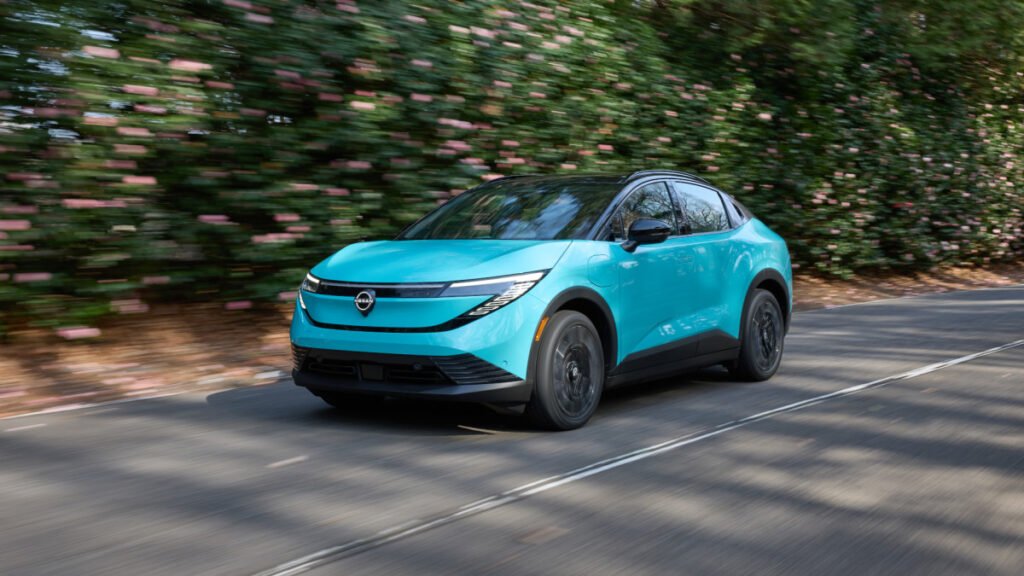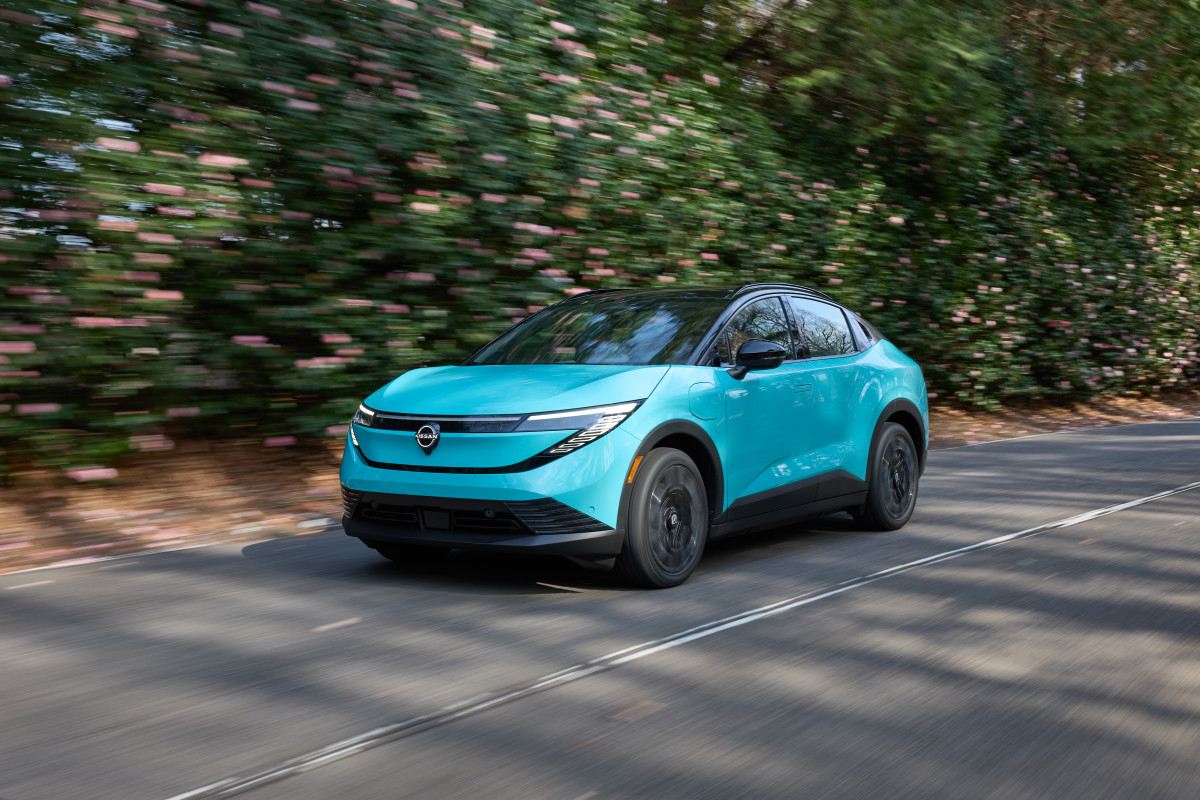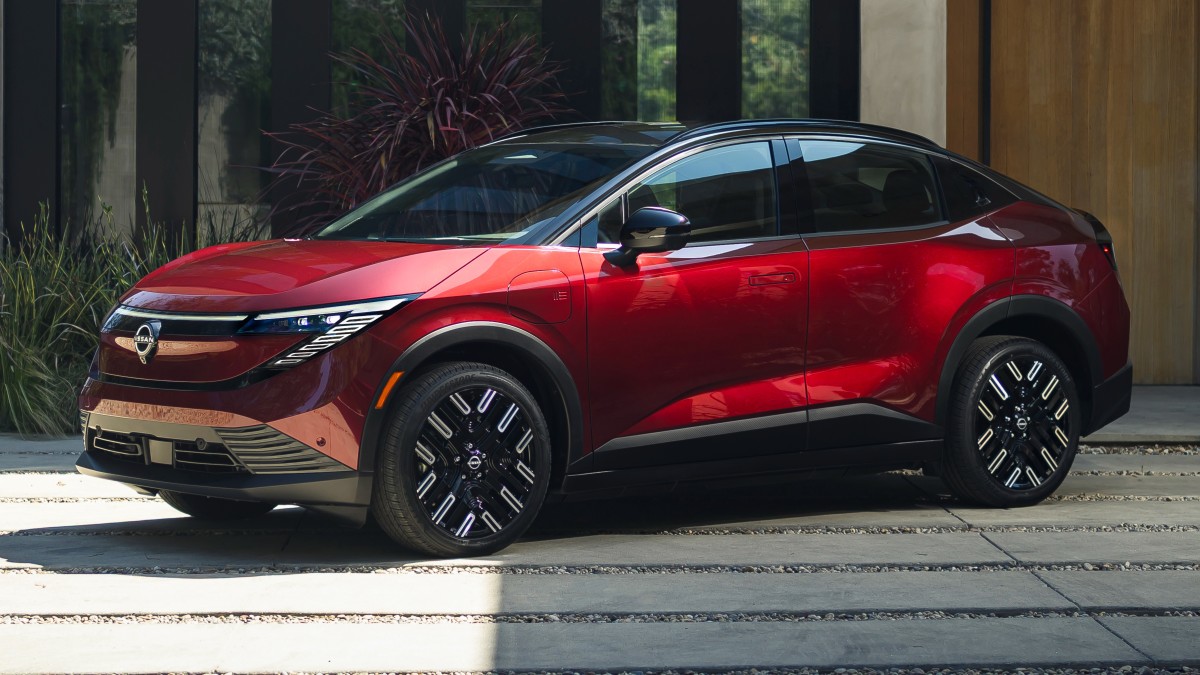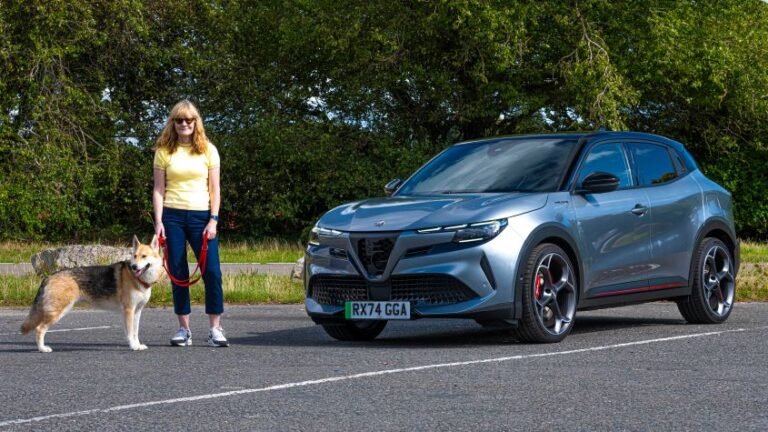
A Crucial Model for a Troubled Automaker
The third-generation Leaf is one of the models that Nissan counts on to help steer the company back to stability. After years of shrinking global sales and heavy losses, the automaker needs a hit in the electric-vehicle space to stay competitive.
The latest Leaf makes a strong case on paper. It abandons the traditional hatchback shape for a small-crossover profile and rides on the same CMF-EV platform as the larger Nissan Ariya. Range improves by more than 30 percent, and US pricing is set to start just under $30,000 – cheaper than the outgoing model and among the most affordable new EVs expected for the 2026 model year. Even before the first example reached a showroom, the formula appeared to be precisely what Nissan needed.
Nissan 
A Battery Bottleneck Before the First Sale
However, Nissan’s rollout is hitting trouble long before customer deliveries are scheduled to begin. Production at the Tochigi plant in Japan has been slashed to less than half of the original plans for the September–November period, with reductions of several thousand units in some months. The problem is not demand or workforce shortages but a lack of suitable batteries.
AESC, the Yokohama-based supplier partly owned by Nissan, has struggled to produce enough high-quality packs for the new model. Lower-than-expected yields have left the factory without the supply needed to maintain the planned build rate.
Nissan
What the Slowdown Means for the Launch
The new Leaf is scheduled to reach US dealers late this year as a 2026 model, with Japanese sales beginning by year’s end and European deliveries to follow in 2026. For a car designed to spearhead Nissan’s recovery, arriving in thin numbers is a significant risk. The company posted a ¥670.8 billion (about $4.6 billion) net loss for the fiscal year ending March 2025 and slipped out of the global top ten automakers after a six-percent sales drop in the first half of the year.
Nissan once led the EV market when the first-generation Leaf debuted in 2010, but competition from Tesla, BYD, and new domestic players like Honda’s N-One e: mini EV is now intense. If battery supply problems persist, Nissan could enter the critical US launch phase with limited inventory, dulling the impact of its most important model and slowing a comeback effort that depends heavily on this crossover’s success.


